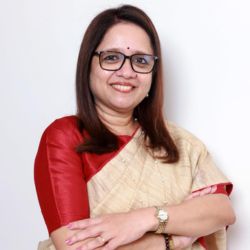India’s growth story is associated with its Micro, Small and Medium Enterprises (MSMEs). Employing over 110 million people, contributing nearly one-third to India’s GDP, and accounting for almost half of the exports as per the Ministry of MSME in 2024, they are the engine of sustainable economic empowerment, innovation, and inclusive development.
Women microentrepreneurs are the silent disruptors. As per government statistics, there are 22.07 million women-run MSMEs, making a total share of 39 per cent, and this number is projected to rise to 30 million by 2030. Without barriers like access to finance and skills, women-owned businesses could create over 150 million jobs (findings by UGRO capital). Women entrepreneurs outperform men-owned MSMEs by 11 per cent in contributing to women’s employment, and one in every three new jobs created by women-run businesses goes to a woman. Born out of necessity and sustained through sheer resilience, these businesses are typically informal, underfunded, and largely financially excluded (according to a study by the International Finance Corporation, 70 per cent find accessing capital challenging).
The Pradhan Mantri Mudra Yojana (PMMY) has been a gamechanger. Envisioned with the aim to “fund the unfunded”, PMMY offers collateral-free, formal loans through three categories: Shishu (up to ₹50,000), Kishor (₹50,000 to ₹5 lakh), and Tarun (₹5 lakh to ₹10 lakh), enabling small business owners to access formal finance. This expansion has helped decentralize entrepreneurial growth, bringing it to the doorsteps of India’s small towns and rural communities.
Since its launch in 2015, over 51.67 crore loans amounting to ₹32.61 lakh crore have been sanctioned. The average loan size has grown from ₹39,000 in 2015–16 to ₹1 lakh in 2023–24—signalling increased credit demand and larger loan uptake over time.
The share of MSME credit in total bank credit increased from 15.8 per cent in FY14 to nearly 20 per cent in FY24.

While Shishu loans have introduced women to formal credit, today, many face the problem of the ‘Missing Middle’, too big for microfinance and not well served by other financial institutions. Very few women have access to affordable credit, in the ₹50,000–₹2 lakh range, to grow their individual enterprises.
For financial services providers, many of these women micropreneurs are invisible and hard to reach as they often run businesses away from the high street, informally, and without sufficient collateral, credit histories, formal registration, or digital footprint.
However, there is an industry-wide movement to address this issue, and we are seeing a shift in credit access for women. In 2015–16, the PMMY data reveals that women entrepreneurs were predominantly concentrated in the smallest loan tier, with 84 per cent of their accounts in the Shishu category, followed by 23 per cent in Kishore and 13 per cent in Tarun. But by 2022, 71 per cent of women’s accounts were in the Kishore category (with Shishu accounts lowering to 73 per cent), reflecting an increase in credit appetite and business growth among women borrowers.
A similar trend is visible in the share of sanctioned amounts across loan categories. In 2015–16, women received 110 per cent of the total sanctioned amount in PMMY’s Shishu but only 21 per cent in Kishore and 13 per cent in Tarun. By 2022, these proportions changed to 72 per cent in Shishu and 51 per cent in Kishore (and 9 per cent in Tarun).
Credit Guarantee Fund Trust for Micro and Small Enterprises (CGTMSE’s) data between 2018 and 2024, too, reveals that women are predominantly borrowing below ₹5 lakhs but borrowing in the range of ₹5- ₹10 lakhs is also growing.
There is now a need for targeted efforts to support women’s transition to higher-value, individual enterprise growth capital and reimagining the credit ecosystem on the demand and supply side.
Innovation in credit distribution
Women micropreneurs deeply value trust and transparency. So, when finance is delivered through channels where trust already exists, it simplifies how they get onboarded, adopt, and engage with it.
To bridge this gap, we worked with SIDBI on their Individual Enterprise Scheme (IES) to leverage the Cluster Level Federations (CLFs), which are women-led community-based institutions formed under the National Rural Livelihoods Mission (NRLM), as Partner Institutions (PIs). They originate, process, and manage individual loans to SHG members, supported by SIDBI’s digital infrastructure. In a pilot across 10 CLFs in two states, the CLFs disbursed 596 loans totalling ₹7.02 crore, with an average loan size of ₹1.18 lakh and a delinquency rate under 2 per cent (PRAYAAS IES unpublished project data 2024-25).
This model demonstrates that it is both feasible and impactful to deliver growth-oriented loans to women through trusted local institutions. Scaling such innovative approaches can unlock a latent segment of women entrepreneurs ready to move towards sustainable, growth-oriented enterprises.
The path forward: From inclusion to empowerment
Women entrepreneurs risk remaining micro not because of a lack of ambition but because of a lack of access to growth capital, knowledge, and pathways for expansion. They may be limited to low-growth sectors like beauty or tailoring because they lack exposure to what truly works in the market. Our work indicates that lenders often perceive women as high-risk simply because they don’t know the segment well enough. Initiatives such as NABARD’s Micro Enterprise Development Programme (MEDP) and Livelihood and Enterprise Development Programme (LEDP) or products such as credit guarantees are crucial but are underutilized and under-researched for women’s economic growth.
MUDRA has laid the groundwork for financial inclusion at scale. But to unlock the full potential of women-led MSMEs, the next ten years must move beyond access and focus on ‘graduation’—enabling women not just to borrow but to grow. The steady transition of women from Shishu to Kishor MUDRA loans signals an appetite for scale; the ecosystem must respond with innovative credit that aligns with her cash flow pattern and catalytic support like business development services, digital bookkeeping tools, market linkages, e-commerce onboarding, and financial capability.
The author, Kalpana Ajayan, is the Regional Head for South Asia at Women’s World Banking, where she leads initiatives to expand low-income women’s sustained access to formal savings, microinsurance, digital payments, credit, and markets.


